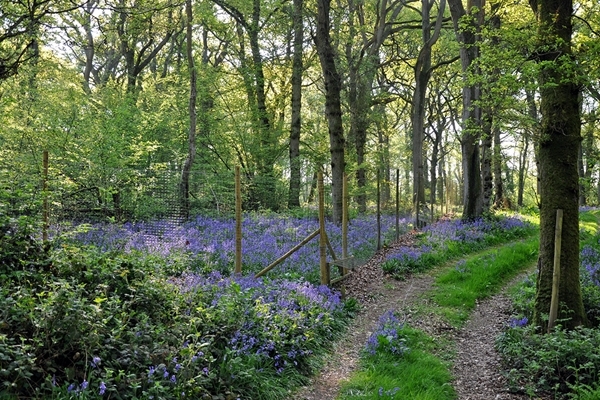
SPECIES of conservation concern, including rare woodland plants and butterflies, are not negatively affected by game management in and around woodland rides, a new study has found.
Ecologists from the Game & Wildlife Conservation Trust (GWCT), a leading research charity in Fordingbridge, discovered the findings in The effect of game management on the conservation value of woodland rides.
They surveyed 139 woods across two regions - southern and eastern. Sites in the southern region were in Hampshire and South Wessex, while sites were located in the Anglian Plain, Breckland, Suffolk coast and Heaths natural areas in the eastern region.
Approximately half of these woods were actively managed for game, while the other half hadn’t been for the past 25 years.
In each wood, they measured the amount and size of the ride habitat, selected the widest ride in the wood, assessed the level of disturbance from footfall or vehicles, and recorded the percentage cover of different plant groups and the number of plant species.
They then took these measurements at different locations within the ride (central, ride side and wood edge) to see the effects of game management varied between on these different locations and counted the number of species in the shrub community. Finally, they surveyed the butterfly community of the ride. These measurements were used to compare the ride habitat between game and non-game woods.
Findings showed the overall amount of ride habitat was not greater in woods managed for game, but the rides present were 20% wider and more open. This suggests that there were differences in the management of the ride habitat in game woods. Rides in game woods were more disturbed by vehicles whereas rides in non-game woods were more disturbed by footfall and horses.
Game management did not affect rare species which are characteristic of open areas in woodland. For example, there was no difference in the numbers of ancient woodland species, such as woodruff and bluebells, between game and non-game woods. The abundance of butterflies, including woodland butterflies like the gatekeeper, was unaffected by game management.
Lucy Capstick, a research ecologist at GWCT and lead author on the paper, said: “Overall, game management did not have a consistently negative effect on species of conservation concern, with the abundance of butterflies and richness of ancient woodland indicator species unaffected by game management.”
“We suggest that the effect of game management on ride communities is benign and that factors other than those directly examined in this study (such as deer browsing) also need to be considered by woodland managers.”
Although this study did not examine pheasant release density effects, previous studies have shown that pheasants are more likely to have a detrimental impact on woodland flora in release pens when released at higher densities.
Dr Capstick added: “We suggest that to minimise potential impacts on woodland rides, pheasants are released at recommended densities (1000/ ha. of release pen).”
To read the paper in full, visit https://www.sciencedirect.com/science/article/pii/S0378112718323302
Notes to editors
The Game & Wildlife Conservation Trust – providing research-led conservation for a thriving countryside. The GWCT is an independent wildlife conservation charity which has carried out scientific research into Britain’s game and wildlife since the 1930s. We advise farmers and landowners on improving wildlife habitats. We employ more than 60 post-doctoral scientists and other research staff with expertise in areas such as birds, insects, mammals, farming, fish and statistics. We undertake our own research as well as projects funded by contract and grant-aid from government and private bodies.
For information, contact:
Eleanor Williams
Telephone: 07592 025476
Email: press@gwct.org.uk